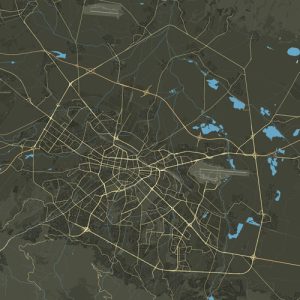Gorna Banya stands as a district within Sofia, forming part of the administrative district of Ovcha Kupel within Sofia Municipality. Positioned in the southwestern expanse of the capital, it shares borders with the Kniazhevo district to the south and Ovcha Kupel district to the north and east. Renowned for its mineral-rich waters and the exceptionally pure air, Gorna Banya owes its pristine atmospheric conditions to the unique interplay of air currents from the Vladai Gorge, Buchin Pass, and Slivnish Field. This phenomenon ensures consistent ventilation, preventing the lingering of fog.
Historically, records indicate the existence of another settlement on the current site during the Middle Ages, abandoned for reasons that remain unclear. Legend has it that the settlement was revived when the dog of Sofia Valia healed itself by bathing in the swampy area near the present-day mineral spring during a hunt. The name “Gorna Banya” emerged as a distinctive descriptor, differentiating it from the nearby “Dolna Banya” or “Sheep’s Fountain.”
In the early 17th century, Gorna Banya formed part of the waqf (religious endowment) of Shah Sultan, the daughter of Sultan Selim II. By the 1940s, the district had 75 Christian households, later reduced to 50 in the 1960s. The village was home to 34 Korenja clans during the 18th and 19th centuries, each responsible for specific communal duties.
The mineral spring in Gorna Banya, renowned for centuries, gained attention in the late 20th century when it was first studied by A. Tegarten. The water, sourced from boreholes with a temperature of 38 degrees, is low in dissolved minerals. Two companies, “BK Gorna Banya” Ltd. and “Bulminvex – GB” Ltd., have been bottling water from these springs since 2016.
Architecturally, Gorna Banya is characterized by single-family and multi-family houses, villas, and low-rise brick cooperatives. Remarkably, it stands out as one of the few areas in Sofia devoid of panel blocks. The villa area boasts luxurious single-family houses, including structures dating back to the 1920s and 1930s, designed in the Alpine style, adding historical charm to the neighborhood.

